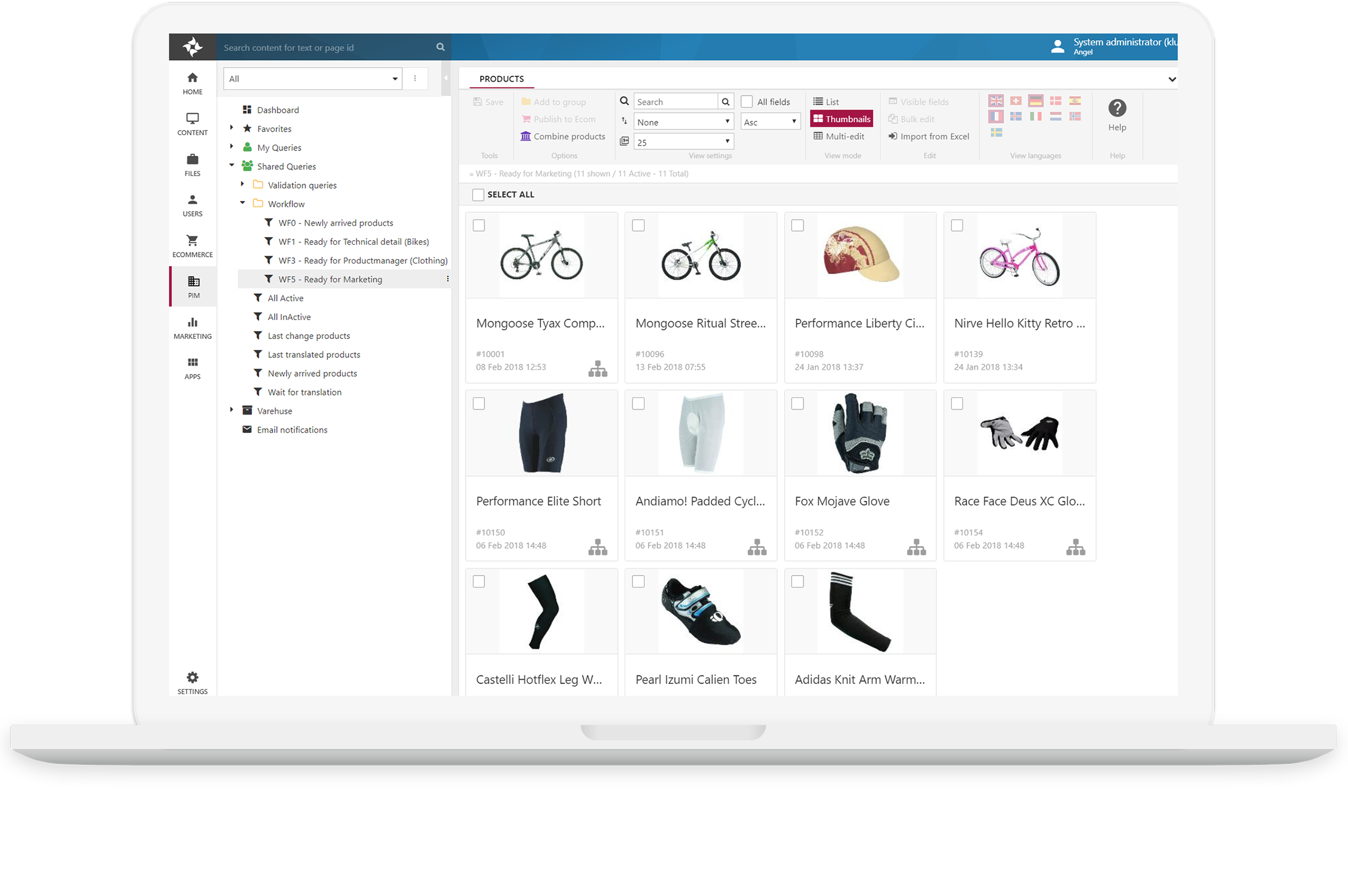Having a flexible data structure
One challenge in managing product information is that we do not need the same product attributes for different groups of products. Handling that issue in a flexible and user-friendly way is a core capability in a professional
Product Information Management (PIM) solution.
A PIM solution allows you to define the product attributes required for each group of products. Some attributes as dimensions, weight and colour will be needed for all or most products, while some attributes will be very specific to a given group of products. You may define these requirements internally and/or use an external standard such as eClass, ETIM or other available standards within the industry and geography where you operate.
Increasingly trading on marketplaces like
Amazon also imposes the maintenance of product attributes needed to onboard your products into those places.
A well thought PIM solution will not only provide you with flexibility around requirements for product attributes, but also ease your work where the requirements are the same. This is done through inherency. That means, that if a range of product groups or specific products should have the same definitions and values, you can maintain the product information at the common level and not need to collect and maintain the same shared information for each product.
|
💡 Example:
If you run an online bike shop the product attributes you need for the various types of bikes will be a little bit different and the attributes for the clothing and accessories will be very different.
|

Image: Screenshot from DynamicWeb PIM. Want to see more?
Ensuring data quality
✔️ Completeness of product information, which is essential for self-service sales approaches. Completeness must be measured against the specific requirements for the product group.
✔️ Timeliness, or currency if you like, of product information, so you have the most updated information is available when needed in the various sales channels.
✔️ Conformity of product information which may be achieved by adhering to an internal or a public standard for product information.
✔️ Consistency of product information so your customer can compare similar products using the same metrics.
✔️ Accuracy of product information, that is ensured by having bespoke ways of controlling product data.
Taking care of relationships
Another challenge in managing product information is utilizing the many opportunities in collecting, storing and exposing the valuable relationships between products. Such relationships can be:
🚩 Accessories, so you can present the best and adequate accessories available and suitable for a main product in order to facilitate a complete buying experience.
🚩 Spare parts, so you can assist your customer and underpin a lasting customer relationship.
🚩 Replacements, so you can suggest a new a better option when a product has become obsolete or a similar product when you are out of stock.
🚩 Cross-sell options, so you can make the customer aware of additional products to complement the initial product in mind.
🚩 Up-sell options, so you can give your customer the choice of a more satisfactory purchase.
Also, for many kinds of products you will need to manage variants of the products like the range of sizes and colors that make up each Stock Keeping Unit (SKU).
Inclusion of digital assets and references
Handling product data is also about storing and managing the relationship to digital assets. Such assets are product images in various sizes and taken from different angels if not maintained as 3D media and videos, data sheets, line drawings, brochures, installation guides, safety handling sheets, certificates and more.
✔️ Uniqueness: You want to use the same image in your printed catalogue and on your web shop.
✔️ Accuracy: The image must show the described product and not something else.
✔️ Consistency: The images for similar products should have the same style.
Data quality checks should also extend to making sure that all the required assets are present. As with product attributes the requirements for these assets differ between product groups.
Further, you can provide additional value to your customers by referencing available articles and other resources that can support your customers in the buying decision process.
Providing Product Information in multiple languages
In today’s globalized world one language is often not enough when presenting your range of products to your audience of buyers and users. A PIM solution must be able to handle product attributes in many languages and the relation to digital assets being in many languages.
Again, the ability to embrace flexibility is essential, as some attributes are language specific and some others are not, value lists for colors and other reference data are language specific but other lookup lists are not.
Adding language as an additional dimension to product hierarchies and product variants will in most cases make the final justification for solving your product data issues by implementing a professional and mature
Product Information Management (PIM) solution.
Calculate your PIM ROI 📊
Are you considering PIM system but unsure of the business case? Try our PIM RoI calculator and see your potential yearly saving by using a PIM system for your ecommerce solution.
